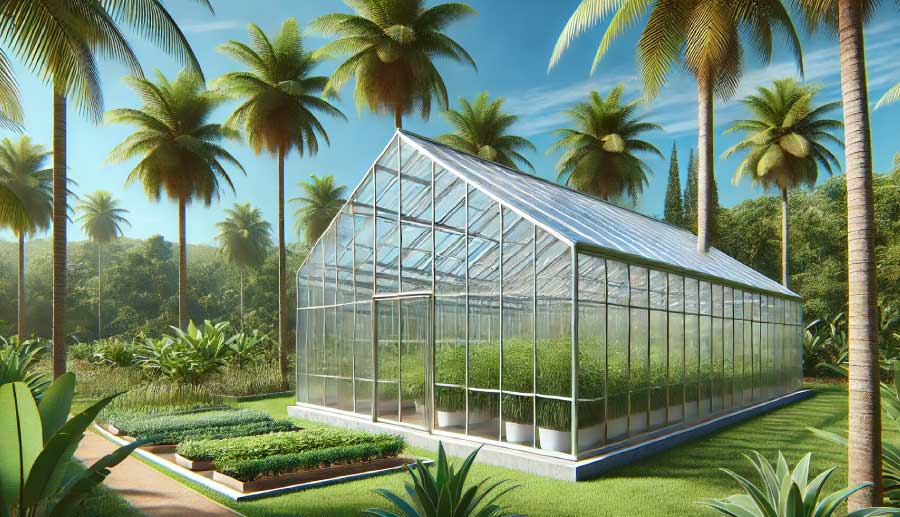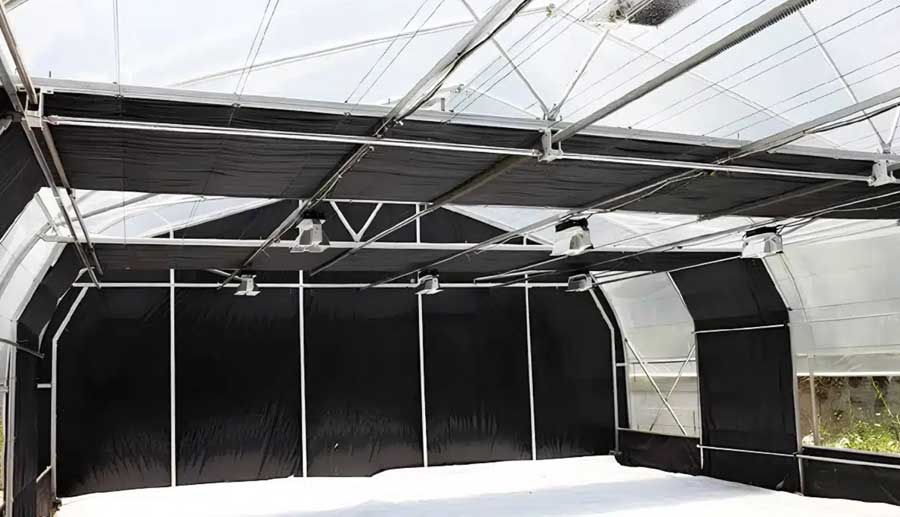Besides light, temperature is another key factor affecting the growth and development of greenhouse plants. Before the advent of automated temperature monitoring systems, we typically used thermometers to measure whether the greenhouse temperature was suitable for growing cultivated plants. By manually checking the temperature levels in the greenhouse, we would decide whether to intervene artificially to adjust the temperature, meeting the conditions necessary for plant growth.
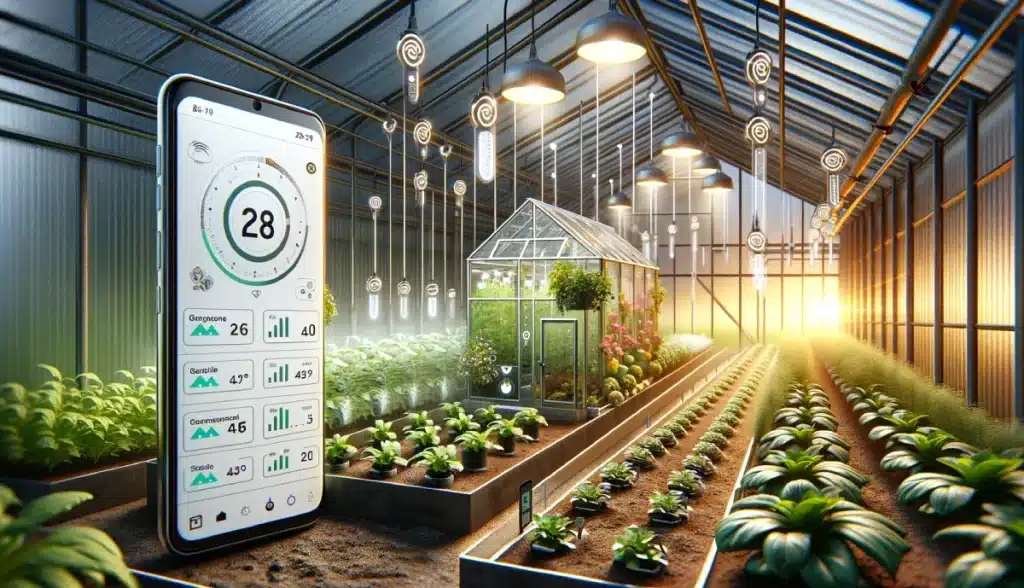
With technological advancements, greenhouse temperature monitoring systems have emerged. These systems often feature remote monitoring and alarm functions. These features enable greenhouse managers to monitor the temperature conditions in real-time, even when they are not on-site, and receive alerts when the temperature reaches levels that could potentially harm the plants. This greatly enhances the efficiency of greenhouse management, ensures that plants grow in the optimal environment, and helps reduce potential losses due to temperature issues.
In this post, we will mainly discuss the considerations for choosing intelligent monitoring systems for greenhouse temperatures and recommend some monitoring and alarm devices for different scenarios in the greenhouse. This will help you better understand whether the environment in your greenhouse is conducive to plant cultivation.
How to Choose a Greenhouse Temperature Monitoring System?
When selecting automated temperature monitoring equipment and systems, besides considering the size of your greenhouse, budget costs, installation and maintenance, and after-sales service, you should pay special attention to the following factors:
1. Accuracy and Reliability
Different plants react differently to temperature changes. If the plants you cultivate are very sensitive to temperature, even minor fluctuations can affect their growth rate, flowering time, and overall health. Therefore, the equipment you choose needs to provide real-time and accurate feedback on temperature conditions, enabling you to quickly adjust the environment using heating, ventilation, and cooling systems to maintain ideal growing conditions for the plants.
2. Remote Access and Multi-Platform Compatibility
As a greenhouse manager, you can’t always be in front of a computer, as you might be busy with other agricultural tasks. Hence, it’s essential that the temperature monitoring system has a multi-platform interface, preferably compatible with smartphones that people carry with them at all times. This way, you can monitor temperature conditions in real time, no matter where you are.
3. Alarm and Notification System
Even short-term temperature anomalies can cause long-term damage to plants sensitive to temperature changes. A temperature alarm system can immediately issue warnings when temperatures reach dangerous thresholds, thereby notifying the greenhouse manager to take swift action.
If you cultivate highly sensitive plants, it is necessary to choose temperature monitoring equipment and systems with alarm functions. Many modern temperature monitoring systems allow users to customize alarm thresholds according to the specific needs of different plants. This means the system can be adjusted according to the unique temperature requirements of various plants, providing more personalized monitoring.
These are some points I believe you should particularly consider when choosing greenhouse temperature monitoring equipment and systems. Of course, the operating interface of such systems also needs to be intuitive and simple so that greenhouse staff can quickly learn how to use them.
Greenhouse Temperature Monitoring Devices Recommendations
In recent years, the retail market has seen a surge of temperature monitoring devices and systems designed for small home and garden greenhouses. Here, we will introduce three well-regarded devices in greenhouse temperature monitoring.
They all feature remote interfaces for real-time temperature monitoring and have alarm functions that trigger alerts when the temperature reaches a threshold, allowing for immediate adjustments.
1. Inkbird WiFi ITC-308
The Inkbird WiFi ITC-308 Digital Temperature Controller is my first recommendation. This controller boasts a high-temperature accuracy of ±2°F and offers convenient wireless connectivity, allowing users to monitor and control temperature through a mobile app remotely. A maximum output load of 1100W (110V) ensures stable operation even on large-scale equipment. Its dual relay output design allows it to control both cooling and heating devices, automatically adjusting greenhouse temperature based on environmental changes.
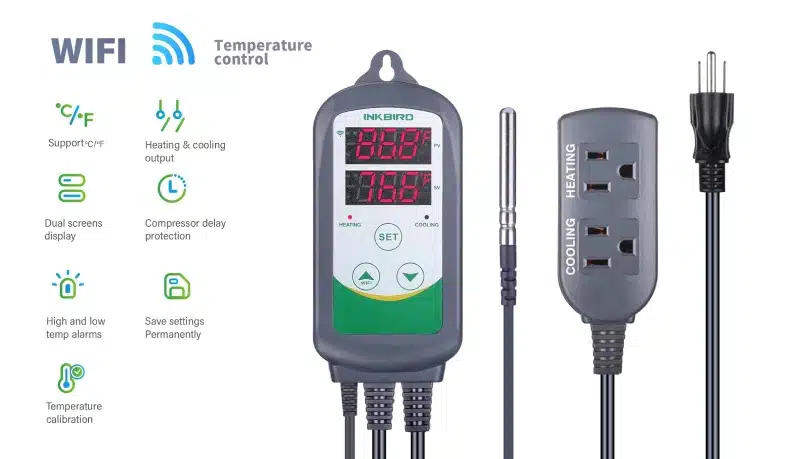
The ITC-308 features a user-friendly interface, supporting both Celsius and Fahrenheit displays. Its Plug-and-play design simplifies installation, making it suitable for various indoor environments, such as home brewing, pet breeding, incubation, and greenhouse cultivation. The high and low-temperature alarm function of the ITC-308 is particularly useful, issuing timely alerts when the temperature exceeds the preset range or when the sensor malfunctions. This temperature-monitoring device is currently priced at around $50 and has received positive reviews on retail platforms.
2. Govee WiFi Hygrometer Thermometer H5179
The Govee WiFi Hygrometer Thermometer H5179 is my second recommendation for a smart temperature monitoring device. Its key feature is its smart WiFi control capability, supporting the Govee Home app for Android and iOS systems, allowing users to remotely monitor temperature and humidity data in the greenhouse through stable WiFi and Bluetooth connections.
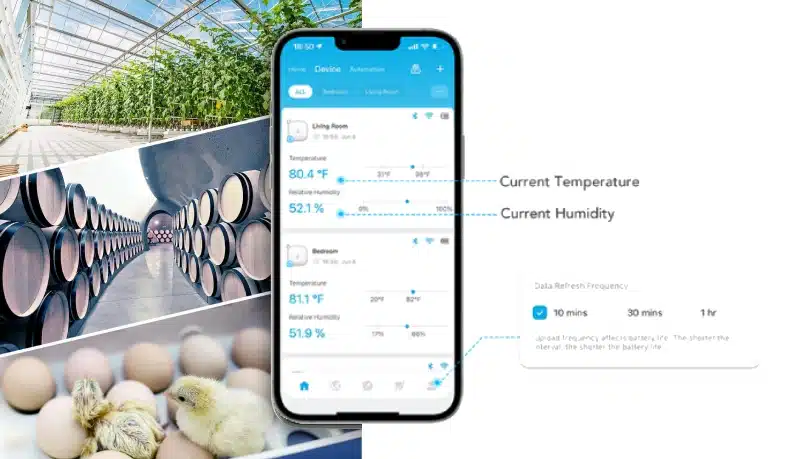
According to its specifications, it is equipped with a Swiss-made sensor capable of measuring temperature with an accuracy of ±0.54℉/±0.3℃ and humidity accuracy of ±3%RH. Additionally, the H5179 refreshes data every 2 seconds, ensuring that users are kept up-to-date with the latest environmental changes in the greenhouse.
It also has a high and low-temperature alarm function, allowing users to set warning ranges for temperature and humidity. Once the monitored data exceeds these ranges, the app will immediately issue an alert, helping users respond more quickly to sudden changes in the greenhouse. It also supports free data storage and export, allowing users to view the past 20 days of data online and export up to 2 years of historical data, which is useful for analyzing long-term temperature and humidity trends and patterns. The price of this product is around $40, and it also has good user reviews. It is suitable for small home garden greenhouses.
3. MarCELL Cellular Temperature, Humidity, and Power Monitor
The MarCELL Cellular Monitor is my final recommendation for small greenhouse temperature monitors. Its core feature is its 24/7 continuous monitoring capability, with stable data transmission through the Verizon 4G LTE network, independent of Wi-Fi connections. Besides monitoring greenhouse temperature, it can also track humidity and power status in real-time, sending instant notifications to users through the app when set conditions change. You can set personalized alarm notifications in the Sensored Life app to ensure receipt of important information at critical moments.
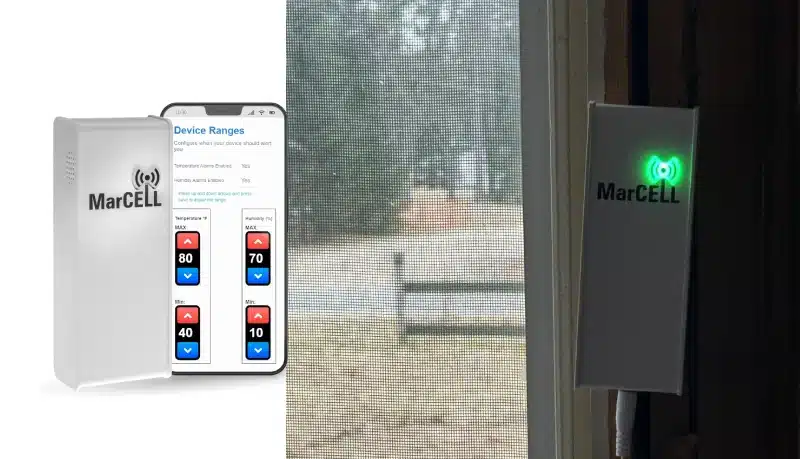
In terms of use, simply plug the device into a standard wall outlet to quickly start monitoring. The device updates monitoring data every 8 hours and immediately sends alerts when power is lost or when temperature and humidity exceed set ranges. It also comes with a built-in lithium-ion backup battery, continuing monitoring even during power outages, ensuring continuity and reliability. This device currently has a high rating of 4.6 stars and over 600 user reviews on Amazon, priced at around $200.
The above tools are just recommendations for wireless temperature monitoring devices and corresponding systems for small greenhouses. If you are operating a large commercial greenhouse, the number of temperature sensors required will differ, and there will be higher demands for the quality and durability of temperature monitoring devices, which cannot be quickly established with just a few tens of dollars in budget.
Temperature Sensing Systems for Commercial Greenhouses
Considering the complex needs of large-scale crop growth, commercial greenhouse temperature monitoring systems emphasize high automation and integration.
In commercial greenhouses, temperature monitoring is not just an independent function; it is usually closely integrated with the monitoring systems of various environmental factors, such as humidity, lighting, and CO2 concentration, to achieve precise management. This level of integration ensures that various environmental parameters can coordinate, optimizing the overall growing environment and enhancing crop yield and quality.
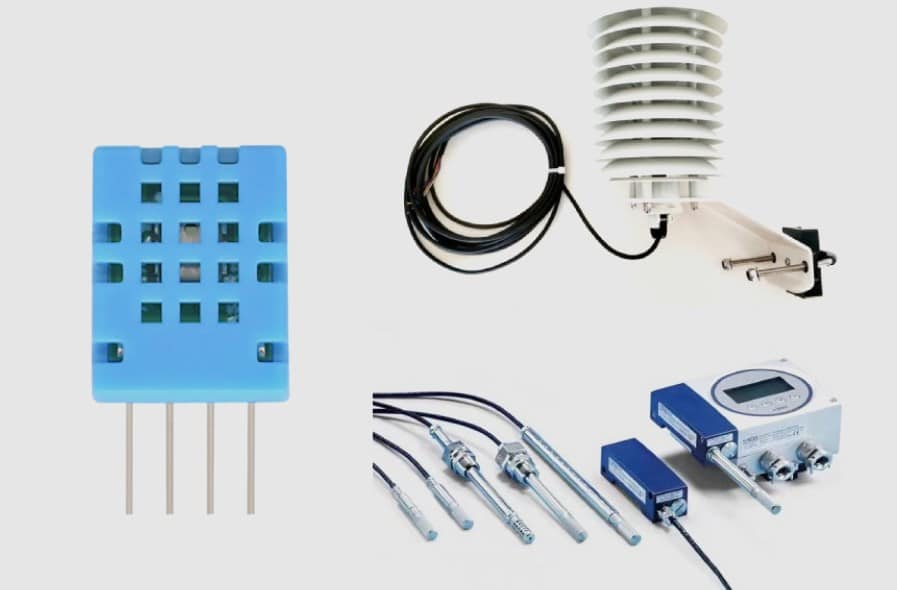
Furthermore, data management and analysis are critical in commercial greenhouse temperature monitoring. Therefore, monitoring tools are expected not only to monitor temperature changes in real time but also to track and analyze temperature data over the long term. This helps managers understand the impact of temperature on crop growth, which is crucial for optimizing growth cycles, preventing pests and diseases, and increasing yield. Of course, these systems often feature advanced alarm mechanisms that immediately notify managers when environmental parameters are abnormal, ensuring timely measures are taken.
Lastly, commercial greenhouse temperature monitoring systems demand better durability and reliability. After all, these systems need to operate continuously for extended periods and withstand more demanding greenhouse environmental conditions. Commercial-grade devices are far superior in terms of durability and stability compared to those for home or small-scale greenhouses.
Conclusion
This concludes my sharing of knowledge about greenhouse temperature monitoring systems. I hope you find it useful. Additionally, if you have product needs for operating a commercial-grade greenhouse, feel free to contact us anytime. We have experts who can provide you with targeted solutions and quotes, helping you smoothly carry out your greenhouse agricultural production.
